The UK’s major cities garner most of the interest from developers, investors and the media, yet one of the biggest challenges facing the country is how to nurture growth and investment across regional towns and cities.
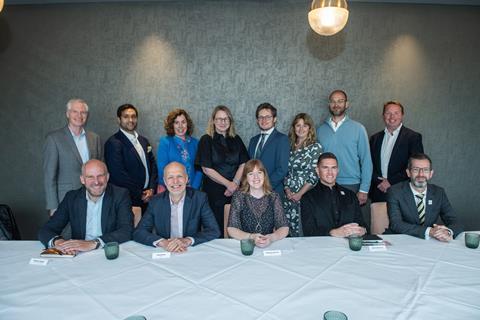
Panel of experts
- Guy Ackernley, managing director, development and residential, Urban Splash
- Michael Auger, managing director – south, Muse
- Jamie Bennett-Ness, deputy news editor, Property Week
- Tim Blackman, vice-chancellor, Open University
- Abigaile Bromfield, director of cities, planning and design,ARUP
- Paul Clark, co-founder and head of land and partnerships, Stories
- Stephanie Denton, head of content, Property Week [chair]
- Rob Groves, regional development director, MEPC
- Rishi Khurana, managing partner, Osborne + Co Investment Management
- Selina Mason, director of masterplanning, Lendlease
- Adam Sciberras, special projects director, Milton Keynes Development Partnership
- Paul Thomas, director of planning & placemaking, Milton Keynes City Council
- Sophie White, regeneration sector head, Aviva Capital Partners
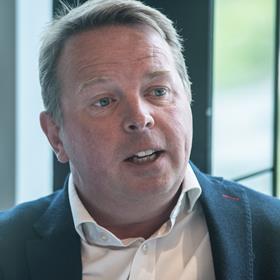
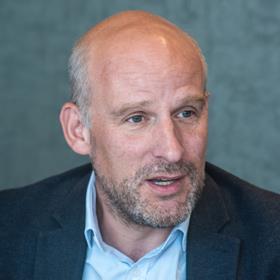
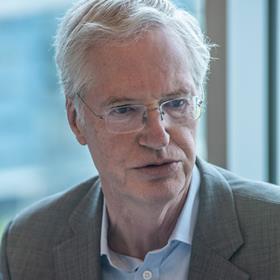

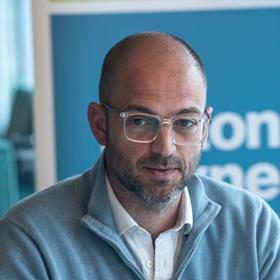
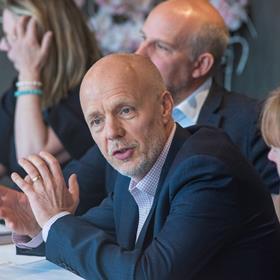

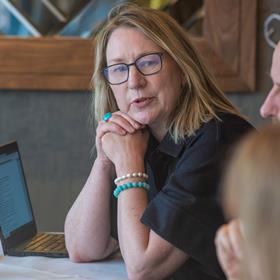
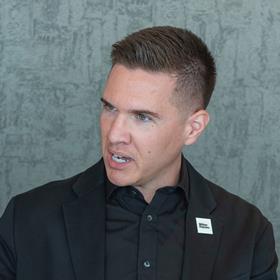
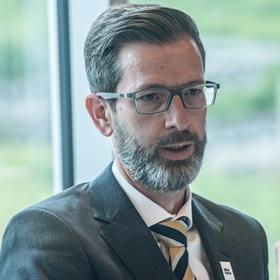
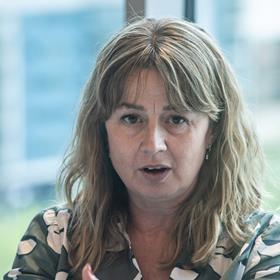
Large swathes of the country fit under this demographic, but key challenges currently loom for all regional hubs, from struggling city centres, empty office spaces and changing retail and leisure needs to car-dependent transport systems – to name a few.
Developers, investors, council leaders and local stakeholders are all keen to work out how to turn challenge into opportunity. Property Week, in association with Milton Keynes Development Partnership, sat down with a panel of experts to discuss how.
The ‘planned city’
Milton Keynes acted as the venue for Property Week’s expert-led discussion. The Buckinghamshire city, just 50 miles north-west of London, is contending with all of the above challenges, so formed a perfect example of the difficulties facing regions in 2023. The panel agreed that places such as these were facing the same industry and worldwide problems as London and New York, with economic downturn and changing patterns in office and city centre use, but with vastly different amounts of wealth and levels of investment to fight back.
They are also playing a noticeable role in the climate crisis, which will only grow as the levelling-up agenda hopefully bears fruit. On top of this, regional cities bring their own challenges unique to their geography, history and economic background.
Milton Keynes was the largest of several new towns and hubs created by the government in the 1960s due to the need to relieve housing congestion in London. Adam Sciberras, special projects director at Milton Keynes Development Partnership (MKDP), referred to it as “the planned city”.
Sciberras told the table: “Not surprisingly, not everything that was planned in 1967 is appropriate anymore today. We are on a bit of a journey as a city and we are working out what the next chapter of Milton Keynes is. While we face similar challenges to other cities, Milton Keynes is unusual in having space and capacity to grow, through never-developed parcels of land, buildings that are ripe for renewal and a move away from surface-level parking.”
While Milton Keynes is also home to the Open University, Santander, Red Bull Racing and Technology, and other major occupiers, the city’s leaders are keen to attract further external investment to drive progress forward.
“We are looking at what the new economy is around the tech sector, how we introduce higher education and integrate that into the city centre, and finally how we start to see Milton Keynes as a place,” Sciberras said. “How do we introduce that sort of vibrancy to our city centre and introduce some finer grain into what is a city of over-generous boulevards, lots of surface-level parking and some nice but far apart buildings?”
The city centre
Reinvigorating city centres emerged as the first key issue facing regional hubs. Selina Mason, director of masterplanning at Lendlease, said there had been a dramatic shift in the purpose of the city centre, driven by digital changes and accelerated by Covid-19.
“It is now about congregation and attracting a diverse range of people into it [the centre],” she said. “There has been a pivot towards leisure as the main purpose. The challenge is how to purpose leisure in a way that takes it beyond a night-time economy, as that alone will not drive the productive economic growth we want. You need to build something else that is going to harness that congregational aspect of a town centre.”
Mason added that city centres, and their planners, now had to work “so much harder” to fulfil their role. This means local decision-makers need to pull as many levers as possible to bring people in, with the experts suggesting more residential aspects returning to town centres, as well as leisure offerings and a focus on education.
Guy Ackernley, managing director, development and residential, at Urban Splash said public transport was also key to tackling this problem, pointing out that from most other cities, it was far quicker to drive than take the train. “Public transport and infrastructure are very important to driving the city forward.”
Sciberras said the city council strongly believed the city centre maintained a very important role in economic recovery for regional hubs, despite their changing nature.
“We have to think about the agglomeration of the city centre and how to diversify its offer – to make it more interactive for all parts of society,” he said.
Sophie White, regeneration sector head at Aviva Capital Partners, added that building on existing infrastructure “absolutely feels like the right way to go”. She added: “There is a massive opportunity to build back into much more diverse communities, and to bring the residential back in. People’s time is constrained, so if you are not here [the city centre] then are you likely to come here? From a future places perspective, it feels like the way to go to protect investment in the long run.”
Reinvention also presents opportunity, pointed out Paul Clark, co-founder and head of land and partnerships at Stories. “In the 1960s and 1970s, these cities were gutted by Arndale-style shopping centres and they lost sight of their connection to the region. We have an opportunity to really define and rediscover those roles. That is certainly what we have been seeing as we go around the country recently.”
‘Stickiness’ challenge
Another aspect of the old-style city centres that requires change is a place’s ‘stickiness’. This is a problem particularly prominent in Milton Keynes, a city designed with an American-style grid system and dedicated to the car.
Lendlease’s Mason said: “The really interesting thing about Milton Keynes is that it was obviously planned for speed and efficiency. It is incredibly permeable; you flow through it almost as if you go past it instead of going through it, and that almost feels like its purpose.”
She said reversing this and building in stickiness would be “genuinely challenging”. She added: “We talk about public realm as this gravitational pull for gathering, and I can see absolutely nowhere where I would like to hang out in this city centre.”
Not surprisingly, not everything that was planned in 1967 is appropriate anymore today
Adam Sciberras
An extension of the problem is an overdependence on cars in cities across the country, with a significant amount of potential public realm given over to surface-level parking. Rishi Khurana, managing partner at Osborne + Co Investment Management, which is delivering Santander’s new £150m UK headquarters in Milton Keynes, said we need to find the right balance between planning requirements, user needs around wellbeing and the change in working patterns and how this impacts occupational strategy, with the rise in construction and funding costs.
“We need to work directly with planners and their stakeholders to ensure the sustainability, viability and commercial success of development.”
Mason added: “It is something interesting about the cities built for the car. We are now pivoting towards a future that is fundamentally based around walking, cycling and public transport, and it is a real challenge to start to disrupt this fluid grid and create stickiness.”
Office occupiers
Rob Groves, regional development director at MEPC, continued the debate by saying an attractive city centre was essential to bring in the right occupiers. “Milton Keynes is interesting, as there is a marketplace for the right type of workplaces,” he said. “It is not going to be massive headquarters, but if there is an attractive city centre it will draw them in.”
He added that it was all about the public realm, from activating the ground floor by ensuring it offers something to the community, to building a strong public realm and culture in the surrounding area.
Milton Keynes is interesting, as there is a marketplace for the right type of workplaces
Rob Groves
The point was reiterated by Michael Auger, managing director – south at Muse, who stated that more investment in public spaces was important to the city-centre experience, bringing people in and keeping them there.
Ramping up collaboration between local authorities and occupiers will also be vital in helping an area thrive, said Khurana. “Cities, towns and developers have to work with large occupiers to make sure their space is open to the community, to support entrepreneurs and local talent, and to be the draw for the wider activation of the space they have.
“Unity Place will support a thriving community by providing a range of amenities open to the public, including an auditorium, event spaces and urban food market.”
Students were seen as another way to drive significant economic energy to a city centre. Tim Blackman, vice-chancellor at the Open University, which has a sizeable campus in Milton Keynes running online courses for students across the UK, said the university was looking at how opening new in-person teaching could contribute to the development of the Milton Keynes city centre.
He added that the university was not interested in traditional lecture theatres but high-amenity business space, more like conference hotels, and even mixed-use shared developments that could optimise space efficiencies, sustainability and the use of smart technology, and create synergies to provide the city centre with footfall day and evening.
Regional reputations
A less tangible problem facing some cities and regions is an area’s reputation. While not an uncommon problem, Milton Keynes is one such place keen for reinvention. “The other thing we are struggling to create at the moment is that story,” said Sciberras.
“A lot of people here work in the tech sector, and we have Santander, Red Bull and Formula One all in the area. Big employers like that earn the commute, and we are looking at the new economy sectors; but other cities have 100 years of history around some sort of industry that we don’t have, and you cannot just build or buy that.”
However, the MKDP director said the city was starting to build up its story with efforts such as the Institute of Technology near Bletchley Park. “We are starting to build up a bit of a brand and a proposition that we can sell with confidence to new occupiers, investors and developers.”
We need to continue to innovate in order to maintain our competitive advantage
Paul Thomas
Blackman said there was an adage that Milton Keynes “is where American urbanism meets the English garden city” but added “in this conversation, something we are interested in is where creativity meets technology”.
Sciberras also urged regions to work more closely together, adding that the goal for Milton Keynes was to make the city “a little more porous”. He added: “Yes, we are competing with Oxford and Cambridge and other people around us. But our occupiers and competitors could go anywhere in the world, especially in technology. So, regions need to work together more than they have done and learn those boundaries in terms of working with occupiers and developers across the region.”
But Auger said the solution and the story needed to drive investment will be different for each location. “I really do agree with the regional relevance of cities and towns, but there is not a one-size-fits-all answer to this up and down the country. It is finding what sectors and specialisms employees who live within the catchment have – which makes a unique place – then tapping into that, whether it is fintech, green tech and so on.
He added: “We are doing a lot of work in Wolverhampton, for example, and they have gone large on green tech and it just makes sense. There is a lot of knowledge for the sector in the Midlands and it is these central concentrations that are going to underpin that place for many years to come.”
Abigaile Bromfield, director of cities, planning and design at ARUP, said: “Where places have been able to successfully reinvent themselves there has been really strong city leadership, a strong clear vision and strategy, which has been continually implemented.” Clark agreed, stating that from the perspective of a developer, the solution was all about leadership, direction and knowing who to pick up the phone to.
Meanwhile, Paul Thomas, director of planning and placemaking at Milton Keynes City Council, spoke of the important role for local leadership in delivering the future vision for the city. “Milton Keynes was created by innovators, and we need to continue to innovate in order to maintain our competitive advantage over other cities. We should not be held back by historic issues or assumptions and should continue to develop our thinking around those factors that set Milton Keynes apart. Milton Keynes is becoming an exceptionally powerful brand.”
Clark concluded that it was “really important” to talk about cities within their regional role. “We must not lose sight of that. We have a gaping lack of regional planning in this country, and it is important to help these cities and towns rediscover their regional roles, their history and the reason they are there.”
He added: “New towns are exceptions to this but this is also their opportunity. This [Milton Keynes] is one of the most unique cities; don’t get away from that – use it.”







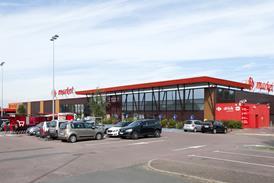
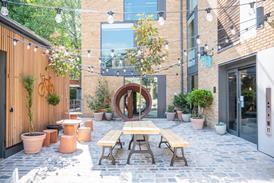
















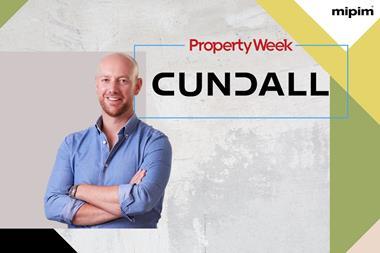





No comments yet